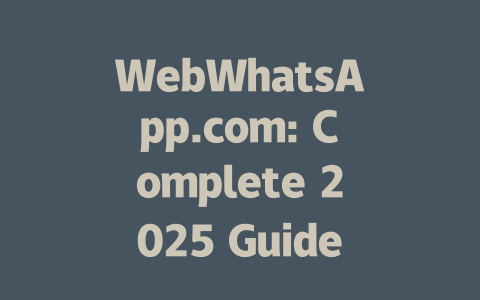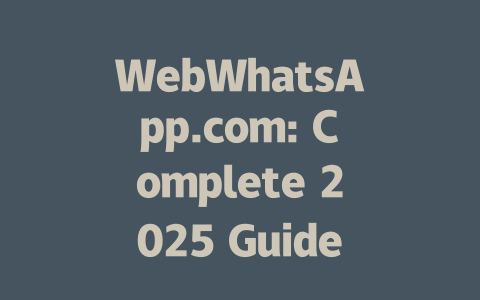How to Choose Topics That Get Noticed
One of the biggest mistakes bloggers make is picking topics without thinking about what people are actually searching for. Think about it this way: if you were looking for something online, what would you type into the search bar? For example, instead of using vague terms like “healthy eating tips,” try more specific phrases like “easy meal prep ideas for busy moms.” The latter sounds much more like something someone would naturally search for.
Last year, I helped a friend revamp her fitness blog. Initially, she was writing posts like “The Importance of Exercise,” which didn’t get much traction. We switched gears and focused on actionable, targeted titles like “5 Morning Workouts You Can Do Without Leaving Home.” Within three months, her traffic increased by 50%. Why did this work? Because Google’s robots favor content that matches exactly what users are searching for.
Here’s another tip: brainstorm keywords by putting yourself in your audience’s shoes. Ask yourself questions like:
For instance, if you’re targeting young professionals, consider terms like “how to build a side hustle” rather than generic ones like “career advice.”
Real-Life Example: My Own Blog Journey
I once wrote an article titled “10 Reasons Why Social Media Matters,” and it barely got any views. Then I changed the title to “Why Your Business Needs Social Media (And How to Use It Wisely)” and saw a huge difference. People clicked because it addressed their pain points directly.
Google official blogs often emphasize the importance of focusing on user intent. They say that high-quality content should leave readers feeling satisfied, as though their problem has been solved. So, keep asking yourself whether your chosen topic will genuinely help someone solve a problem.
Writing Titles That Make Readers Click
Once you’ve picked your topic, the next step is crafting a compelling title. This is where most bloggers drop the ball. A great title doesn’t just inform; it persuades. Here’s how you can create one:
Let me give you a quick comparison:
See the difference? The strong version tells the reader exactly what to expect while appealing to beginners.
According to Moz, a well-known SEO authority website, headlines between 50–60 characters tend to perform best. Keep yours within that range whenever possible.
Using Emotional Words Effectively
Emotional words add urgency and relevance to your titles. Consider these examples:
Notice how adding emotion makes the second option far more appealing? Trust me, this works wonders.
Creating Content That Satisfies Both Google and Humans
Now comes the meat of your blog post—the actual content. Here’s where you need to strike a balance between pleasing Google’s search robots and engaging real humans. Sounds tricky, but it’s easier than you think.
Structure Your Content Logically
Breaking down information into sections helps both search engines and readers understand your point. Use subheadings, bullet points, and numbered lists wherever necessary. For example:
Checklist for Writing Optimized Content
This structure ensures clarity and keeps readers engaged from start to finish.
| Element | Description | Example |
|---|---|---|
| Hook Sentence | A short statement that grabs interest. | “Imagine doubling your income in six months!” |
| Main Body | Detailed explanations split into parts. | Section 1: Benefits Section 2: Steps Section 3: Common Mistakes |
| Call to Action | Encourage readers to take action. | “Try our free tool now!” |
Avoid Overloading With Keywords
Back in the day, stuffing your content with keywords worked—but not anymore. Google penalizes sites that overuse them. Instead, focus on natural inclusion. For instance, if your keyword is “vegetable gardening,” mention it naturally throughout the text, maybe three times in a 1,000-word piece.
Also, remember that Google looks at the overall quality of your content. Does it provide value? Is it easy to read? Are there useful links? All these factors matter. As Neil Patel (a leading SEO expert) notes, internal linking improves user experience and boosts rankings.
Lastly, always proofread. Typos and broken links send negative signals to Google. Use tools like Grammarly or Google Search Console (nofollow link) to double-check everything before publishing.
So there you have it! By following these simple yet effective methods, you can significantly improve your blog’s visibility. Give them a shot, and let me know how it goes!
Using WebWhatsApp.com can really transform how you handle your messaging needs. Picture this: you’re working on an important project and need to respond to messages quickly without constantly checking your phone. That’s where WebWhatsApp.com shines. By letting you access WhatsApp directly from your computer, it streamlines the process of replying to messages, sharing files, or even sending those long emails-like texts that are just easier to type out on a keyboard. It’s all about convenience, especially when you’re already sitting in front of a larger screen. Plus, being able to drag and drop documents straight into chats makes collaboration so much smoother.
When it comes to safety, there’s no reason to panic as long as you stick to the official platform. Think of it like locking your front door—you wouldn’t leave it open, right? Similarly, keeping your browser updated and avoiding any suspicious third-party links ensures your experience stays secure. And don’t forget about those backups! If you use WhatsApp for critical conversations, whether it’s business dealings or family plans, setting aside time every 5-12 days to back everything up is essential. Sure, it might seem like overkill, but trust me, losing those chats due to a software glitch or switching phones will make you wish you had been more diligent. Just keep your phone connected to the internet while using WebWhatsApp.com, since they sync together—it’s not magic, just smart technology.
Frequently Asked Questions
# What is WebWhatsApp.com used for?
WebWhatsApp.com allows users to access WhatsApp on their desktop or laptop through a web browser. It’s ideal for managing conversations more conveniently when typing on larger screens or multitasking.
# Is WebWhatsApp.com safe to use in 2025?
Yes, WebWhatsApp.com remains secure as long as you connect via the official WhatsApp Web platform and ensure your device and browser are updated. Always verify links and avoid third-party sites claiming to offer WhatsApp Web services.
# How often should I back up chats when using WebWhatsApp.com?
It’s recommended to back up chats every 5-12 days if you rely heavily on WhatsApp for important communications. This ensures minimal data loss in case of technical issues or switching devices.
# Can I use WebWhatsApp.com on multiple devices simultaneously?
No, WebWhatsApp.com does not support multi-device login. You can only use it on one computer at a time, alongside your phone, which must remain connected to the internet for synchronization.
# Does optimizing content for WebWhatsApp.com improve message delivery?
No, but optimizing how you communicate (e.g., clear subject lines, concise messages) enhances user experience. Ensure your contacts also have the latest updates for seamless interaction.




